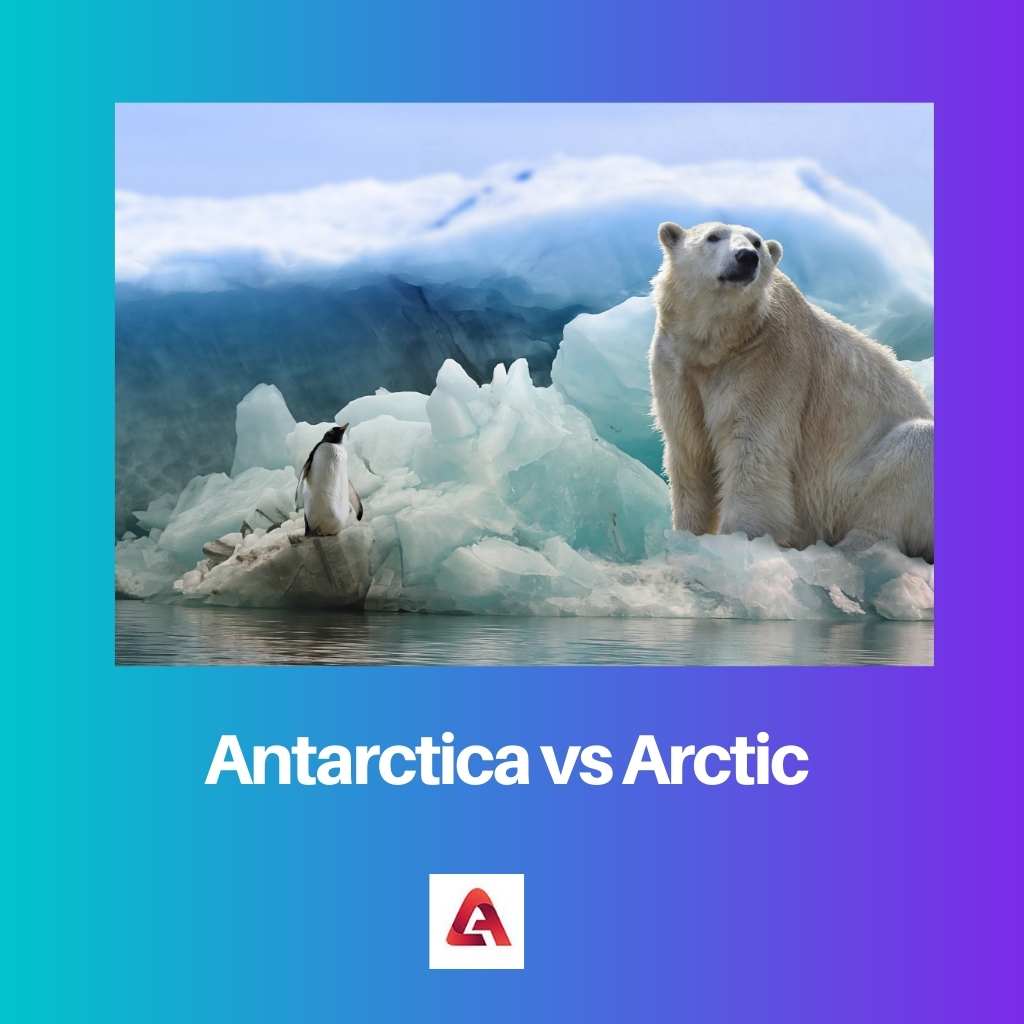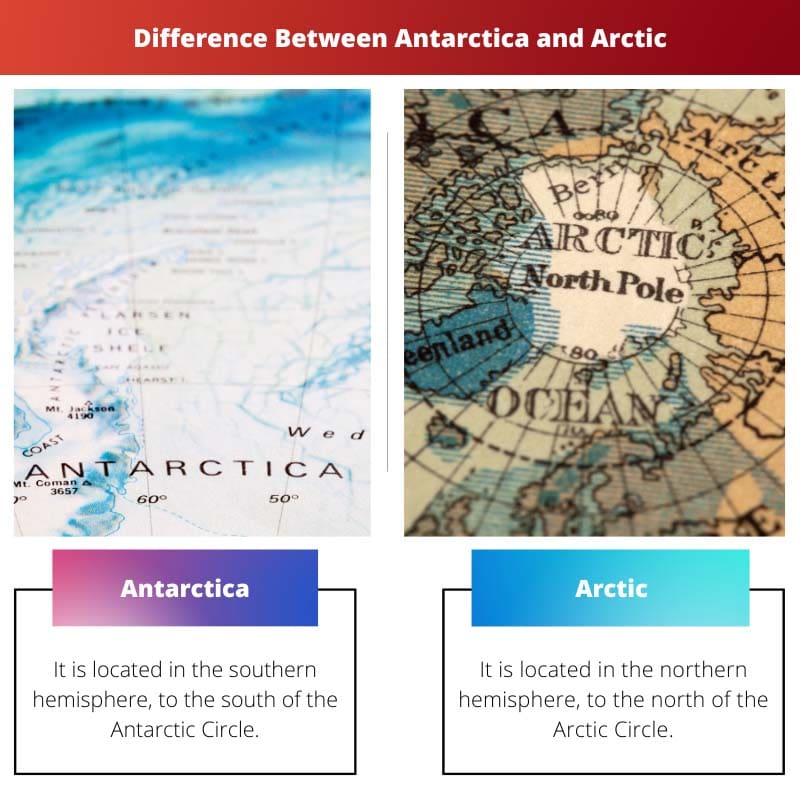We have a beautiful planet. Since its evolution, the virtues of our world have been increasing. The world has many things to offer, from tall mountains and vast rivers to epic monuments and industrial towns.
However, the northernmost and southernmost parts of our planet are relatively unexplored. There are many things to know about our earth’s Antarctic and Arctic regions.
Key Takeaways
- Antarctica is a continent surrounded by oceans, while the Arctic is an ocean surrounded by continents.
- Antarctica is colder and has a more extreme climate than the Arctic, experiencing temperatures as low as -128.6°F (-89.2°C).
- The Arctic is home to various terrestrial mammals, such as polar bears and reindeer, while Antarctica supports only marine wildlife and a few bird species.
Antarctica vs Arctic
Antarctica is the southernmost continent and is situated entirely within the Antarctic Circle. The Arctic is a region located at the northernmost part of the Earth, encompassing the Arctic Ocean and parts of Canada, Russia, Greenland, the United States, Norway, Sweden, Finland, and Iceland.

Antarctica is one of seven continents of the earth. It is a highly inhabited place with extremely cold weather. It is home to many species of plants and animals, which are found exclusively here because it is suitable for that particular environment.
Many countries have set up their research centres on this continent.
The Arctic is more of a region than a continent. It is close to the North Pole and has extreme winters. Not many people live here because of the extreme climate and infertile soil.
It includes parts and regions of various countries such as Russia, Norway, Sweden, Canada, Finland, etc., and has similar types of flora and fauna.
Comparison Table
| Parameters of Comparison | Antarctica | Arctic |
|---|---|---|
| Location | It is located in the southern hemisphere, to the south of the Antarctic Circle. | It is located in the northern hemisphere, to the north of the Arctic Circle. |
| Type of Landmass | It is a continent. | It is a highly divided and fragmented landmass divided among 8 countries. |
| Average Annual Temperature | The average annual temperature of Antarctica is -60C | The average annual temperature of the Arctic is about -40C. |
| Size | The size of Antarctica is around 14.2 million kilometers square. | The size of the Arctic region is around 14.5 million kilometers square. |
| Population | The population is around 5000, which decreases to around 1000 in winters. | Around 4 million people live in the Arctic region. |
What is Antarctica?
Antarctica is the world’s fifth-largest continent located in the earth’s southern hemisphere. It lies south of the Antarctic Circle, and the South Pole is a part of it.
The extreme winters and lack of resources make the continent highly unsuitable.
However, most of the population of Antarctica is the researchers belonging to about 70 research stations set up by various countries such as the United States, India, China, etc.
There are no citizens of the continent, but a small population exists. During summers, the population is about 5000, which reduces to about a thousand during winters.
This is the reason why the continent has only geographical diversity and no human-made institutions such as capital, economy, commerce, government, etc.
There is a thick sheet of ice across the region, and the major geographical features include mountains, polar deserts, frozen lakes, glaciers, etc.
The animal population of Antarctica includes seals, squids, penguins, blue whales, Antarctic krill, Albatrosses, etc. Ice sheets across the continent have formed due to the continuous precipitation in the form of snow.
More than 70% of the world’s freshwater is present in Antarctica in the form of ice.
However, the increased rate of global warming is a serious concern as it is constantly melting the ice of the continent, thereby increasing the sea level. This is causing floods and submergence in coastal regions across the world.

What is Arctic?
The Arctic is not a single landform like Antarctica. It is a collective name given to the regions of the world located between the Arctic Circle and the North Pole.
Countries such as Russia, Alaska (U.S.), Norway, Sweden, Finland, Greenland, Iceland, and Canada are completely or partially located in this region and hence, can be called “The Arctic.”
Being in the polar region, the Arctic region gets low amounts of sunlight and experiences extremely cool and dry winters. Average winter temperatures can be as low as -40°C. It has a low and spread-out population density.
The climate highly influences the population, culture, wildlife, natural vegetation, etc.
This region has witnessed many cultures and civilizations over the years. The major cultures of the Arctic are Paleo-Eskimo culture, Dorset culture, Thule culture, etc.
Inuits are the present-day inhabitants of the region. The vegetation of the region is characterized by infertile soil and tundra vegetation. The major trees and plants include mosses, lichens, cotton grass, small shrubs, etc.
Wildlife is an important aspect of the Arctic region, as many species of animals are found exclusively here. These animals include the Arctic fox, hare, wolf, Musk ox, Moose, and Beluga.
The Arctic region also acts as a political unit and has many political associations among the member nations.

Main Differences Between Antarctica and Arctic
- Antarctica is a single landmass in the southern hemisphere and is a relatively newfound continent. The Arctic is not a single landmass and cannot be considered a continent as it is divided into many separate landmasses, with the Arctic Ocean flowing in between.
- Antarctica is located in the southern hemisphere, extending southwards to the Antarctic Circle. The Arctic is located in the northern hemisphere, extending northwards to the Arctic Circle.
- Although both Antarctica and the Arctic are the coldest places on the earth, Antarctica is colder than the Arctic. The average temperature of Antarctica can go as low as -60°C. The average temperature of the Arctic is about -40°C.
- Penguins are mostly found in Antarctica, but there are no polar bears. Polar bears are mostly found in the Arctic, but there are no penguins.
- Antarctica has an extremely low population with no permanent inhabitants. This is the reason there are no political entities present in Antarctica. Many countries constitute the Arctic, and hence they have a political association such as the Arctic Union.

- https://www.annualreviews.org/doi/pdf/10.1146/annurev.ea.20.050192.002441
- https://link.springer.com/chapter/10.1007/978-94-009-4830-3_2
